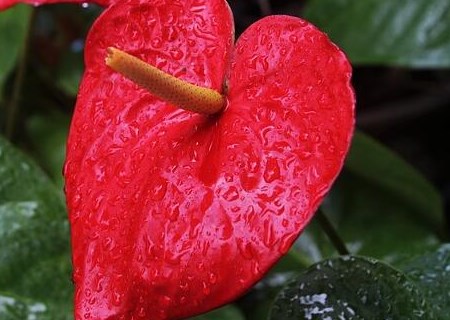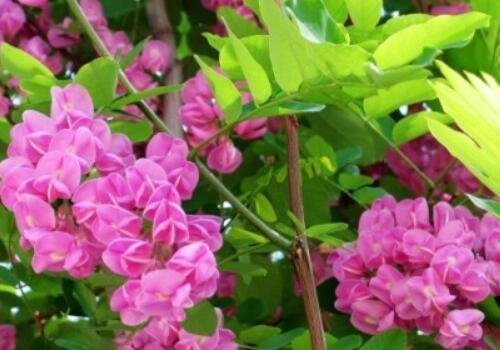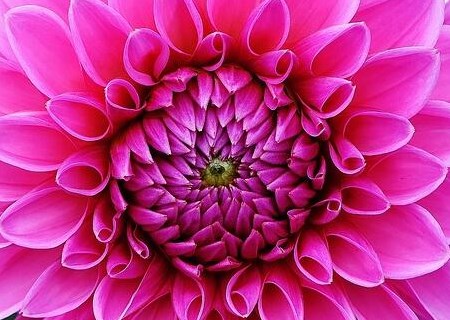What are the seed planting methods of flower candle (alias Anthurium andraeanum)? How do you water it? What if the leaves turn yellow and dry? How much is the price?
Flower candle alias Anthurium andraeanum, Araceae perennial evergreen herbs, sexual preference for warm, humid, semi-shady environment, avoid direct sunlight. The flower candle flower appearance is strange and beautiful, the florescence is long, suitable for potted plants. So what do you know about the planting methods of candle seeds? How do you water it? What if the leaves turn yellow and dry? How much is the price per pot? According to the flower market survey, it is known that there are many varieties of Anthurium andraeanum, the general wholesale price is between 38 yuan and 280 yuan, and the retail price is between 80 yuan and 450 yuan. The wholesale price of domestic tissue culture red palm flowers is between 10 yuan and 80 yuan, and the retail price is between 15 yuan and 150 yuan.

Planting method of Candle seed
Ramet
The ramet period is mainly in the cool and humid spring, and it can also be divided in the cool and cool weather in autumn. Never split in a hot summer or in a dry and cold season. When dividing plants, we should pay attention to the principle of not harming the mother plant, that is, too large lateral buds, too tight lateral buds, and too weak lateral buds, mainly separate lateral buds which are easier to separate from the mother plant and are more robust, with at least two main roots or more. When transplanting seedlings, the lateral buds can be separated from the mother plants by uniform force by hand, and when it is difficult to separate, the lateral buds can be cut open at the bud eyes with a sharp disinfection blade. Cut flowers to remove buds should first be plucked from the soil layer, pay attention to the distribution of the root system and the bud eye of the underground stem, carefully cut the bud eye, and then take out the lateral bud. The cut lateral buds were planted in a cool place after the wound was slightly dried to promote root and restore growth. When planting, the root system should be flattened, the plant should be upright, it should be supported if necessary, it can not be watered immediately after planting, it can be sprayed to the leaf surface to maintain humidity, and watering or thin fertilizer solution can be applied according to the situation after 2 days.
Cuttage
The upright and stemmed varieties of Candle can be propagated by cutting. Cut the cuttings with 1-2 stem nodes and 3-4 leaves, insert them into the water moss, and plant them in the pot after the new roots germinate.
Sowing seeds
The sowing method is generally used in breeding. Flower candle natural pollination is poor, need artificial pollination to get seeds, seeds mature, should be picked along with sowing. The seeds of Candle are larger, which are sown in indoor pot, and the optimum temperature for germination is 25 ℃-28 ℃. The seeds germinate 20-25 days after sowing, and the sowing seedlings need to be cultivated for 3-4 years to blossom. The advantages of conventional propagation methods are simple and low cost. First, the propagation speed is slow to meet the needs of the promotion of new varieties. Second, propagated plants are susceptible to pathogen infection, accumulate in the plant, and lead to species degradation and even death.
Tissue culture
The stem tip, stem segment, young leaf and petiole of Candle can be used as tissue culture explants. The explants were washed with running water, soaked in 75% alcohol for about 20-30 seconds, washed with sterile water, then sterilized with 0.1% liter of mercury for 8-10 minutes, washed fully with sterile water, and the sterilized liquid was removed. The surface moisture was absorbed by aseptic filter paper, cut into suitable size, inoculated and cultured. Different explants have different ways of inducing regeneration. Adventitious buds or lateral buds can be directly induced by stem tip or bud culture. On the other hand, the culture of leaf, petiole or stem first induced callus and then differentiated into buds or somatic embryos. The culture medium was MS, 1/2MS or modified MS. Modified MS medium, some components in MS medium were added or decreased, and reducing the amount of ammonium nitrate had better induction effect on Candle. The medium was supplemented with 30 g / L sucrose, 8-10 g Agar as coagulant and pH 5.8. Hormone regulation is the most important. Candle is sensitive to hormones and has obvious cumulative effect. Buds can be induced and cultured with 6-BA1-3mg / L, combined with NAA0.1-0.2mg / L. When cultured with leaves, 6-BA1.0 mg / L and 4-D0.1 mg / L were used to induce callus formation, and then transferred to the differentiation medium containing 6-BA1.0 mg / L + NAA0.1 mg / L to induce bud formation.
In the first few days after inoculation, light was properly shaded, and fluorescent lamps were used to assist light for 8-10 hours at a temperature of 25 ℃. After about 45 days of culture, the new buds or calli were subcultured in flask. After 40-50 days of induction culture, the aseptic culture system turned to flask culture to proliferate and promote bud formation. The medium can be cultured with MS or modified MS+30 g / L sucrose + 7 g / L Agar + 6-BA0.5-1 mg / L + NAA0.5 mg / L for one generation. The culture conditions are the same as before. Strong seedling and rooting culture in the process of proliferation culture, cut off the bud seedling, propagate to a certain amount, can reduce the amount of hormone, 6-BA0.1-0.2mg / L, the bud seedling grows big and strong, gives birth to air and takes root. After the strong seedlings were cultured for 1-2 generations, the root formation was promoted on the medium supplemented with IBA0.1 mg / L or NAA0.1 mg / 1; after 7-10 days of culture on the rooting medium, the aerial root grew at the base and gradually formed the root system, about 30-40 days, and further grew to 3-4 cm.
During this period, auxiliary light can make the seedlings thicker. After transplanting and raising seedlings in greenhouse, the seedlings were taken out and rinsed with water to wash the culture medium on the seedlings for transplanting. The transplanting substrate can be mixed with 3 parts of peat, 1 part of perlite and 1 part of coconut bran, river sand, broken flower mud and so on. After planting, drench thoroughly with 8-1000 times chlorothalonil and spray water to moisturize. It was moderately shaded in the early stage of transplanting and sprayed with foliar fertilizer every 7-10 days after survival. Regularly spray carbendazim, chlorothalonil and other protective seedlings to prevent disease. Seedling leaves and stems are relatively tender, often harmed by land tigers and snails, and so on.
How to water candles
Water quality requirements
Anthurium andraeanum is sensitive to salt, so try to choose slightly acidic water for watering. Ordinary household water can be used after 2 or 3 days. However, if the water quality is too acidic, it will reduce the ornamental value. Natural Rain Water is the best water source for Anthurium andraeanum conservation. When it rains, you might as well reserve a little more.
When home farming, you can use discarded cola bottles and mineral water bottles filled with tap water for 3 or 4 days, spray the leaves of Anthurium andraeanum. Tap water can prevent chlorine from volatilizing after a certain period of time.
Watering time
Spring, autumn and winter, watering as far as possible in warm and sunny weather, in the morning or noon, avoid cold time watering. Summer watering is usually in the evening. Don't water it at noon. You can choose to spray from 10:00 to 11:00 and after 15:00.
What if the leaves turn yellow and dry?
Bacterial infection
Anthurium andraeanum leaves appear yellow, dry symptoms, is likely to be damaged by bacteria. Can be sprayed with 0.3% garlic juice solution, 0.2% vinegar or treated with special agents carbendazim and chlorothalonil.
Soil discomfort
The soil and water in most northern areas contain more salt and alkali, lack of soluble iron needed for plant growth, and do not change soil for a long time, resulting in the lack of nutrients in the plant, the leaves will gradually lose green and turn yellow.
You can buy professional acidic soil from the florist, or treat the original soil. Oxalic acid is added to the soil to change its acidity and basicity. You can also pour some acidic water every week, dilute it with lemonade or edible vinegar and then pour it.
Air drying
The growth of Anthurium andraeanum needs high air humidity, but when the indoor air is too dry in winter, the leaf tip is dry and yellowing, or the leaf edge is scorched, or the leaf is scorched, the edge is curled and so on.
According to the growth characteristics of Anthurium andraeanum, properly increase the air humidity and often spray to the leaves and the surrounding environment. Keep the plant away from the air outlet of heating and air conditioning as far as possible in winter.
Too much watering
The new leaves of Anthurium andraeanum are yellow and the old leaves are normal, which is generally caused by too much water, which makes the soil in the basin too wet for a long time, or even stagnant water, causing part of the fibrous roots to rot, hindering normal breathing and absorbing nutrients, causing the leaves to turn yellow and fall off gradually.
The stagnant water in the basin should be discharged in time. If the plant is in an environment where the soil is too wet for a long time, the plant can be removed from the basin and the soil can be dried and replanted. After normal watering, the leaves will gradually return to green.
Uneven fertilization
Little fertilization, or no change of soil for a long time, lack of nitrogen and other nutrients in the soil led to thin branches and leaves, thin and yellow leaves. In addition, excessive fertilization will also appear new leaves hypertrophy, uneven, while old leaves dry tip, scorched yellow shedding.
If fertilizing too little, trace mineral elements should be added, and fully water-soluble fertilizers such as "Huaduoduo" can be used. " If the leaves turn yellow due to excessive fertilization, you should stop applying fertilizer immediately and increase watering. In serious cases, part of the old soil can be removed, replaced with new soil, and managed normally after replanting.
Time: 2019-03-18 Click:
- Prev

Can I plant safflower locust trees in the courtyard of my home? How much is it per tree? When do you plant and blossom? How do you plant it?
Safflower Robinia pseudoacacia generally refers to hairy Robinia pseudoacacia, also known as hairy Robinia pseudoacacia, Jiangnan Robinia pseudoacacia, pink Robinia pseudoacacia, Red Robinia pseudoacacia, no Robinia pseudoacacia, purple sparrow, with high ornamental value. Can I plant safflower locust trees in that courtyard? How much is it per tree? When do you plant and blossom? How do you plant it? Learned from Suqian Garden Seedling Base
- Next

What are the seed planting methods of Dahlia in the subfamily Tubulae? What if it doesn't blossom? What varieties do you have?
Dahlia, perennial herb, Dahlia is one of the most famous flowers in the world, which is planted in most countries in the world. So do you know the planting methods of dahlia seeds? What if it doesn't blossom? What varieties do you have? Seed planting method of Dahlia
Related
- Fuxing push coffee new agricultural production and marketing class: lack of small-scale processing plants
- Jujube rice field leisure farm deep ploughing Yilan for five years to create a space for organic food and play
- Nongyu Farm-A trial of organic papaya for brave women with advanced technology
- Four points for attention in the prevention and control of diseases and insect pests of edible fungi
- How to add nutrient solution to Edible Fungi
- Is there any good way to control edible fungus mites?
- Open Inoculation Technology of Edible Fungi
- Is there any clever way to use fertilizer for edible fungus in winter?
- What agents are used to kill the pathogens of edible fungi in the mushroom shed?
- Rapid drying of Edible Fungi

